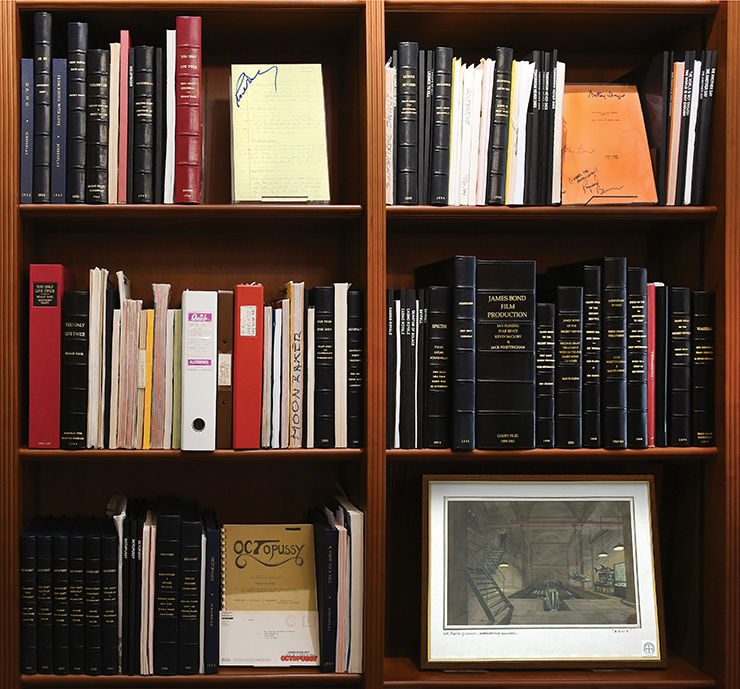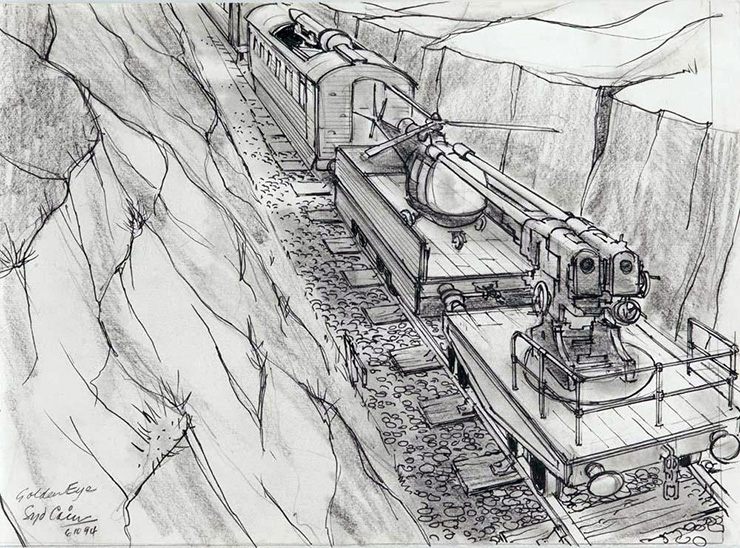|
. |
|
HIGHLIGHTS
INCLUDE: |
|
• |
‘The Birth of a Legend’ – Wolf
Mankowitz & Richard Maibaum’s earliest draft screenplay for the
first Bond film Dr. No, released in 1962. |
|
• |
Roald Dahl’s manuscript first
draft screenplay for You Only Live Twice (1967) – which
at 244 pages is the most substantial Roald Dahl manuscript to
exist in private hands and come on the market in decades. |
|
• |
Storyboard sheets titled “Bond
Pursues Vesper – Car Chase” from Casino Royale (2006),
visualising the memorable motor-pursuit through Montenegro of Le
Chiffre by Bond, with Daniel Craig clearly sketched. |
|
• |
Screenplay for “Warhead”, an
unrealised Bond film written between 1976-1978 that has been
described by Martin Schøyen as “what would have been the best
James Bond film up to that point, had it been produced.” |
|
• |
M.G. Carter’s unique colour
“Warhead” set design, showing an underground chamber inside
the Statue of Liberty, hiding mechanical sharks with nuclear
warheads ready to be dispatched into the sewers of New York. |
|
• |
Manuscript lyrics written in full
by Louis Armstrong for the song ‘We Have All the Time In The
World’, from the 1969 film On Her Majesty’s Secret Service
which made a poignant reappearance in No Time to Die
(2021). Signed by Armstrong and inscribed to his long-time
manager Joe Glaser, “To Joe from Satch” with an additional
humorous note “yea my debut song”. Lyrics written on the blank
verso of a printed comedy weight-loss regime. |
|
• |
Extensive material and
correspondence concerning the creation of the film Thunderball
(1965) – an adaptation of the novel of the same name by Ian
Fleming released in 1961, which in turn was based on an unrealised
film treatment which Fleming had worked on with scriptwriter Jack
Whittingham and film producer Kevin McClory between 1958-1960. The
novel THUNDERBALL was subject to a famous copyright dispute in
1961, when Whittingham and McClory took action against Fleming for
not crediting them in the novel. |
|
• |
A carbon copy from Ian Fleming’s
office of the annex to a second draft film treatment written by
Fleming entitled “James Bond of the Secret Service”, in which the
character of James Bond is outlined in tremendous detail,
describing Bond as “… a blunt instrument wielded by a Government
Department. He is quiet, hard, ruthless, sardonic, fatalistic.
Audiences will tend to dislike him… In his relationship with women
he shows the same qualities as he does in his job. He likes
gambling, golf and fast motor cars. He has two suits, single
breasted… His guns are a Barreta (sic)… He also uses a Smith &
Wesson. His car is an open Bentley…” |
|
• |
Hand-drawn and hand-coloured
watercolours by costume artist Gerald Moulin for the costume
designs for ‘Commander James Bond’ in full Naval Commander dress (Tomorrow
Never Dies) and ‘Xenia Onatopp’ in her disguise as a French
Navy helicopter pilot (GoldenEye). |
|
• |
Autographed screenplay of Bond 18
(released as Tomorrow Never Dies), signed by “Bond”
(Pierce Brosnan), “Carver” (Jonathan Pryce), “M” (Dame Judi Dench),
“Q” (Desmond Llewellyn) and Raymond Benson who has additionally
inscribed “I wrote the novelisation”. |
|
• |
Stunt co-ordinator Gerard
Moreno’s copy of a production-used shooting script of ‘License
Revoked’ (released as License To Kill in 1989 – after a
survey showed that 50% of Americans did not understand the term
“revoked”). |
|
• |
An original vintage studio-issued
press pack, issued by Warner Brothers in 1983 for the film
Never Say Never Again. The pack contains cast and credit
sheets, production information, biographies of the main characters
as well as a full set of 17 black and white publicity stills
housed in a colour-printed card folder. |
|
• |
A signed original concept drawing
by production designer Syd Cain, illustrating a scene from
GoldenEye featuring the Russian train, as seen near the
end of the film, when the officers take off in the helicopter,
leaving James Bond and Natalya Simonova to perish in a fiery train
explosion. Sydney B. Cain’s career in the film business spanned
some fifty years and he remains best known for his work in various
design capacities on the 007 series, from Dr. No (1962) to
GoldenEye (1995). |

